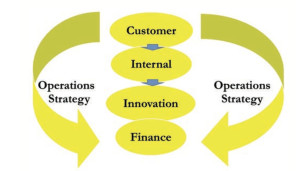Marketing 101
Today’s blog post, Marketing 101, is written for us by our new Guest Writer, Bonnie Feigenbaum. Bonnie has a wealth of experience as a professor of Marketing in Quebec, and shares with readers a detailed overview of the subject.
Bonnie Feigenbaum is a Senior PR Consultant with TNKR Media, former Town Councillor and Chief of
Staff to a Federal MP. She has almost 30 years of teaching experience, creating, and delivering courses
at five post-secondary institutions, including McGill’s Desautels School of Management. She is a
bilingual, marketing and communications professional with 15 years of participation in local politics and
almost 40 years of community involvement.
Through Bonnidée Services, her own boutique communications company, she has been responsible for
all aspects of the strategic plan for a wide range of clients, specializing in government relations and
stakeholder management.
Her teaching philosophy, EDU-TAINMENT, is rooted in flexibility and adaptability using a three-pronged
approach of presentation, practicality, and participation to integrate real-life experiences in marketing,
communications, politics, and business to create a dynamic environment within a theoretical base.
Marketing is a process where the company attempts to understand their consumer to satisfy their needs and thus reap the rewards of profits and loyalty.
Research is the key to gaining the knowledge to develop those customer insights. A company needs to continually stay abreast of the ever-changing macroenvironment. Demographic, Cultural, Environmental, Economic, Technological and Political are the six macro environmental factors that can positively or negatively impact any industry. For example, since March 2020, an uncontrollable natural environmental factor, the worldwide pandemic known as COVID-19 has wreaked havoc on the business community. Some issues that had to be managed on the fly were new highly sanitized customer reception requirements, shortages due to lack of raw materials and supply chains jams and absence of human resources.
An overview of your industry and your company’s strengths and weakness can illuminate where you can leverage upcoming opportunities and mitigate potential threats. This constant surveillance, use of marketing intelligence can keep your company in a pro-active position at the forefront of your field.
The business needs to learn all they can about your customers’ needs, wants and demands so you can create a marketing offering, product, service or idea that will have value for consumers. Theses insights will allow a business to answer the first TWO questions of customer outreach;
WHO will your company serve and HOW will your offering be different?
WHO to be served can be derived by separating your market, by demographic and lifestyle variables and then deciding which segment will be the best match for you? Your primary target of interest will usually be the group or groups that is easiest to capture (“low hanging fruit”) and will bring you the most reward, in the form of sales in a product or service industry or in the form of buy-in to the idea in a social marketing context.
HOW is related to the appeal your product brings to the customer. How will your product be special, have added value or create that special customer connection? In marketing terms, we call that USP-Unique Selling Proposition, what makes you stand out and what value proposition are you presenting to your target.
Now that we know our goals, we can start on the pathway to success and use our marketing tools to create a marketing strategy that delivers the right product, at the right place, at the price to the right people and promote that messaging. The use of the marketing mix (4P’s) is how we implement our strategy. For example, companies that deal in tangible offerings would first want to use their research to fully develop the THREE levels of the product. A CORE (1st level) need links to the real consumer problem, like thirst can be satisfied by water. However, the choice of how to satisfy your thirst is the ACTUAL PRODUCT (2nd level). You can choose coffee, wines or even energy drinks to satisfy the problem of being thirsty. The 3rd level, AUGMENTED PRODUCT is about the promises you make, your warranties and guarantees that should provide added value to your target. Remember, promise made must be kept. In fact, Red Bull agreed to pay more than $13 million to settle a false advertising lawsuit about the drink’s ability to boost energy. Sketchers USA faced a class action lawsuit when their Shape-Ups toning shoes did not provide the advertised health benefits and actually could cause injury.
This serves to illustrate the importance of a truthful, clear messaging strategy that clicks correctly and clearly with your customers. This is accomplished by leveraging the five components of the company’s integrated marketing communication plan (IMC- Advertising, Sales, Sales Promotion, Direct Marketing which includes many new (social) media components, and the often forgotten and thus underused, Public Relations.) which is really an expanded version of the promotion “P”.
The decisions range from content to creativity, what will you message to your consumers be and how will you deliver it? You will also need to determine what media channels to use, how often you engage as well as if and who you would use as your messenger. This is the controllable part of the communications plan which involves of all the channels you pay for or own.
The uncontrollable aspect is called earned media and it involves of all the user generated content and conversations about your brand. If a client is willing to recommend your product, an indicator of brand loyalty, they become quasi-brand ambassadors, and promote your products for you organically. To generate this level of advocacy you need to exceed customer expectations and ensure customer satisfaction. This will also allow your company to maintain profitable long-term relationships.
Research again comes into play. You need to confirm you have created value for your targets. We can accomplish this through surveying. We can ask our clients: –
- Have we met or hopefully exceeded their expectations?
- Will they continue to purchase from us, purchase more?
- Will they recommend us to others?
This is an example of generating primary research. The macro and micro environmental research discussed earlier usually is done through secondary research and internal databases as that is much quicker and cheaper. Timely decision-making information provided by marketing research allows management to make the right choices. When you have created the right appeals for the target customers, in terms of product, price, place and promotion, you collect sales, profits and customer devotion.
Did you enjoy this blog? Read more great blog posts here.
For our course lists, please click here.



